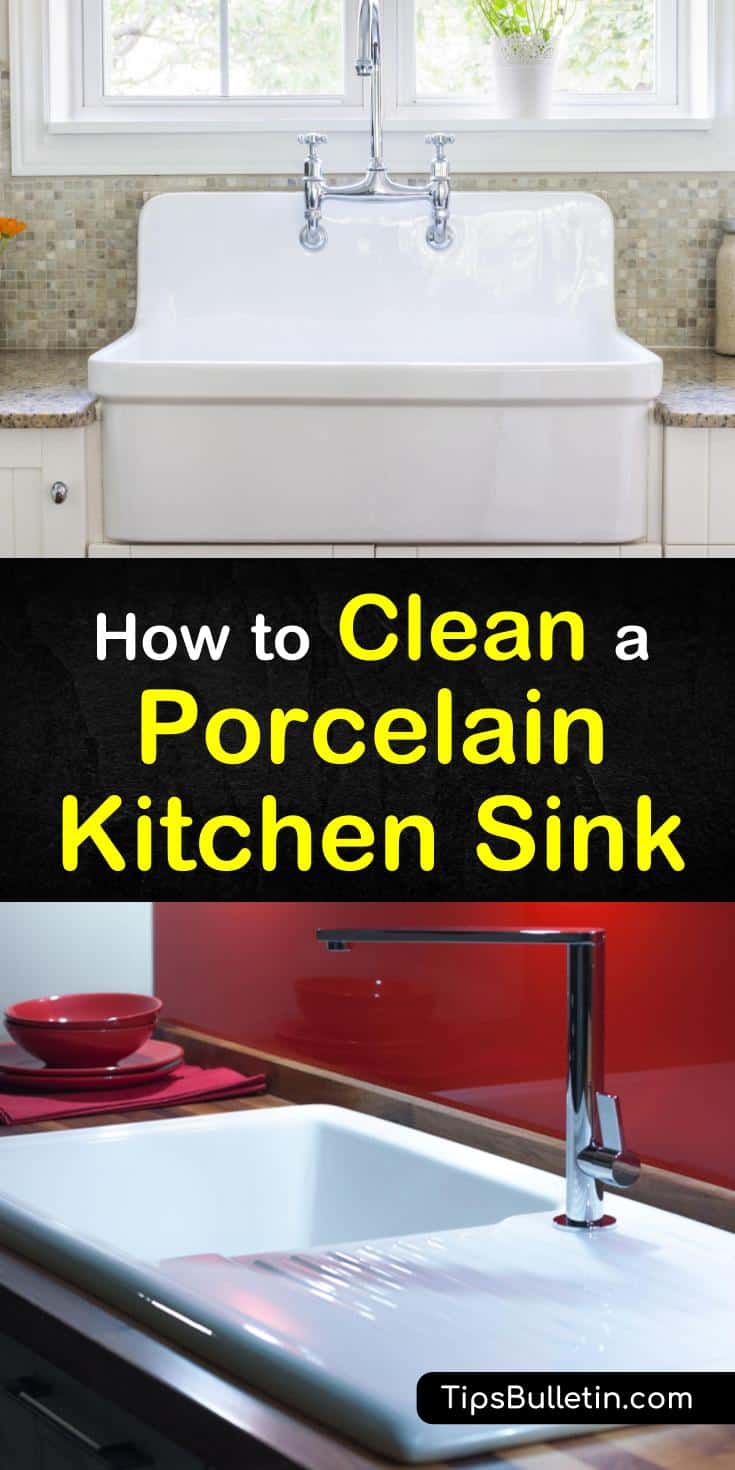If you're looking to upgrade your kitchen with a new sink, one of the options to consider is a drop-in porcelain kitchen sink. A drop-in sink is easy to install and can give your kitchen a sleek and modern look. In this guide, we'll walk you through the steps of installing a drop-in porcelain kitchen sink on your own.1. How to Install a Drop-In Porcelain Kitchen Sink
Before you begin, make sure you have all the necessary tools and materials. You will need a wrench, screwdriver, plumber's putty, a level, silicone sealant, and a drop-in porcelain kitchen sink, among other things. Step 1: Turn off the water supply to your kitchen sink. This is usually done by turning off the valves under the sink or shutting off the main water supply to your house. Step 2: Next, remove any old sink and clean the area around the sink hole. Make sure there's no debris or leftover putty that can interfere with the installation process. Step 3: Take your new drop-in porcelain kitchen sink and place it upside down on a flat surface. Apply a thin layer of plumber's putty around the edge of the sink. This will create a watertight seal when the sink is installed. Step 4: Carefully flip the sink over and place it into the sink hole. Make sure the sink is centered and level. If necessary, use a level to ensure the sink is straight. Step 5: Once the sink is in place, secure it by tightening the mounting clips underneath the sink. Use a screwdriver or wrench to tighten the clips until the sink is firmly in place. Step 6: Now it's time to connect the plumbing. Attach the drain assembly to the bottom of the sink and secure it with the provided nuts. Then, connect the water supply lines to the faucet and tighten them with a wrench. Step 7: Once the plumbing is connected, turn on the water supply and check for any leaks. If there are no leaks, you're all set!2. Step-by-Step Guide for Installing a Drop-In Porcelain Kitchen Sink
Installing a drop-in porcelain kitchen sink is a DIY project that anyone can tackle. With the right tools and materials, you can have a beautiful new sink in no time. Not only will you save money on installation costs, but you'll also have the satisfaction of completing the project yourself.3. DIY: Installing a Drop-In Porcelain Kitchen Sink
Before you begin installing your new sink, here are a few tips to keep in mind: Measure Twice: Make sure to measure your sink hole and the dimensions of your new sink before making any cuts or purchases. This will save you from any installation mishaps. Use Silicone Sealant: In addition to plumber's putty, use silicone sealant to create a watertight seal around the edges of your sink. Have a Helper: Installing a sink can be a two-person job, so it's helpful to have someone else hold the sink in place while you secure it. Be Patient: Installing a sink can take some time, so don't rush through the process. Take your time to ensure everything is properly installed.4. Tips for Installing a Drop-In Porcelain Kitchen Sink
Before you start the installation process, here are a few things you should know: Size and Shape: Drop-in porcelain kitchen sinks come in a variety of sizes and shapes. Make sure to choose one that fits your sink hole and complements your kitchen design. Maintenance: Porcelain sinks are fairly easy to maintain, but they can chip or crack if not handled carefully. Avoid using harsh chemicals or abrasive materials when cleaning your sink. Compatibility: Make sure your new sink is compatible with your existing plumbing and countertop before beginning the installation process.5. What You Need to Know Before Installing a Drop-In Porcelain Kitchen Sink
There are several benefits to choosing a drop-in porcelain kitchen sink: Easy Installation: As mentioned, a drop-in sink is one of the easiest types of sinks to install, making it a great DIY project. Affordable: Drop-in porcelain sinks are typically more affordable than other types of sinks, such as undermount or farmhouse sinks. Durable: Porcelain sinks are known for their durability and can withstand daily use without chipping or staining. Easy to Clean: Porcelain sinks are non-porous, making them easy to clean and resistant to stains and bacteria.6. The Benefits of Installing a Drop-In Porcelain Kitchen Sink
While installing a drop-in porcelain kitchen sink is a straightforward process, there are a few mistakes that are commonly made. Avoid these mistakes to ensure a successful installation: Not Measuring Properly: As mentioned, it's crucial to measure your sink hole and new sink before beginning the installation process to avoid any issues. Not Using Enough Plumber's Putty: A thin layer of plumber's putty is necessary to create a watertight seal. Make sure to use enough to prevent any leaks. Not Tightening Mounting Clips: Mounting clips are used to secure the sink in place. Make sure to tighten them properly to prevent any movement or leaks.7. Common Mistakes to Avoid When Installing a Drop-In Porcelain Kitchen Sink
Before you begin installing your sink, make sure you have the following tools and materials: Wrench Screwdriver Plumber's Putty Silicone Sealant Level Drop-In Porcelain Kitchen Sink Mounting Clips Drain Assembly Water Supply Lines8. Tools and Materials Needed for Installing a Drop-In Porcelain Kitchen Sink
If you already have a drop-in porcelain kitchen sink and are looking to replace it, follow these steps: Step 1: Turn off the water supply to your sink. Step 2: Disconnect the plumbing from the sink. Step 3: Use a wrench to loosen the mounting clips and remove the old sink. Step 4: Clean the area around the sink hole and proceed with the installation steps outlined above.9. How to Remove and Replace an Old Drop-In Porcelain Kitchen Sink
If you encounter any issues during the installation process, here are some common troubleshooting tips: Leaking: If you notice any leaks, make sure all mounting clips are tightened and that there is enough plumber's putty and silicone sealant creating a watertight seal. Uneven Sink: If your sink is not level, adjust the mounting clips until it is straight. Cracked or Chipped Sink: If your sink has any visible cracks or chips, it may be best to contact a professional for repairs or consider replacing the sink altogether.10. Troubleshooting Common Issues When Installing a Drop-In Porcelain Kitchen Sink
Choosing the Perfect Drop-In Porcelain Kitchen Sink

Why Choose a Drop-In Porcelain Kitchen Sink?
 When it comes to designing your dream kitchen, there are countless options to consider. One important decision is what type of kitchen sink to install. While there are many different materials to choose from,
drop-in porcelain kitchen sinks
are a popular and practical choice. Porcelain is a type of
ceramic
that has been fired at a high temperature to create a smooth, glossy finish. This makes it not only aesthetically pleasing, but also durable and easy to clean. If you are looking for a versatile and stylish sink for your kitchen, a drop-in porcelain sink may be the perfect choice for you.
When it comes to designing your dream kitchen, there are countless options to consider. One important decision is what type of kitchen sink to install. While there are many different materials to choose from,
drop-in porcelain kitchen sinks
are a popular and practical choice. Porcelain is a type of
ceramic
that has been fired at a high temperature to create a smooth, glossy finish. This makes it not only aesthetically pleasing, but also durable and easy to clean. If you are looking for a versatile and stylish sink for your kitchen, a drop-in porcelain sink may be the perfect choice for you.
Factors to Consider when Choosing a Drop-In Porcelain Kitchen Sink
 Before making a purchase, there are a few important factors to consider when choosing a
drop-in porcelain kitchen sink
. The first is the size and shape of the sink. Measure the space where you plan to install the sink and make sure to choose a size and shape that will fit comfortably. Additionally, think about the depth of the sink and whether you prefer a single or double basin.
Porcelain sinks
come in various sizes and shapes, so take the time to find the perfect fit for your kitchen.
Before making a purchase, there are a few important factors to consider when choosing a
drop-in porcelain kitchen sink
. The first is the size and shape of the sink. Measure the space where you plan to install the sink and make sure to choose a size and shape that will fit comfortably. Additionally, think about the depth of the sink and whether you prefer a single or double basin.
Porcelain sinks
come in various sizes and shapes, so take the time to find the perfect fit for your kitchen.
Design and Style Options
 One of the greatest benefits of a
drop-in porcelain kitchen sink
is the vast array of design and style options available. From traditional to modern, there is a porcelain sink to match any kitchen design. You can choose from a variety of colors, including classic white, as well as different finishes such as matte or glossy. You can also opt for a
decorative pattern
or design on the sink, adding a unique touch to your kitchen.
One of the greatest benefits of a
drop-in porcelain kitchen sink
is the vast array of design and style options available. From traditional to modern, there is a porcelain sink to match any kitchen design. You can choose from a variety of colors, including classic white, as well as different finishes such as matte or glossy. You can also opt for a
decorative pattern
or design on the sink, adding a unique touch to your kitchen.
Installation Process
 Installing a drop-in porcelain kitchen sink may seem like a daunting task, but with the right tools and instructions, it can be a straightforward process. First, you will need to cut a hole in your countertop according to the measurements provided by the sink manufacturer. Then, place the sink in the hole and secure it with clips provided. Finally, connect the plumbing and your new sink is ready for use!
In conclusion, when it comes to designing your dream kitchen, don't overlook the importance of choosing the right kitchen sink. A
drop-in porcelain kitchen sink
offers durability, easy maintenance, and a wide range of design options. Take the time to carefully consider the size, shape, and design of your sink before making a purchase. With a little bit of planning and the right tools, installing a drop-in porcelain kitchen sink can be a simple and rewarding addition to your home.
Installing a drop-in porcelain kitchen sink may seem like a daunting task, but with the right tools and instructions, it can be a straightforward process. First, you will need to cut a hole in your countertop according to the measurements provided by the sink manufacturer. Then, place the sink in the hole and secure it with clips provided. Finally, connect the plumbing and your new sink is ready for use!
In conclusion, when it comes to designing your dream kitchen, don't overlook the importance of choosing the right kitchen sink. A
drop-in porcelain kitchen sink
offers durability, easy maintenance, and a wide range of design options. Take the time to carefully consider the size, shape, and design of your sink before making a purchase. With a little bit of planning and the right tools, installing a drop-in porcelain kitchen sink can be a simple and rewarding addition to your home.




















































































